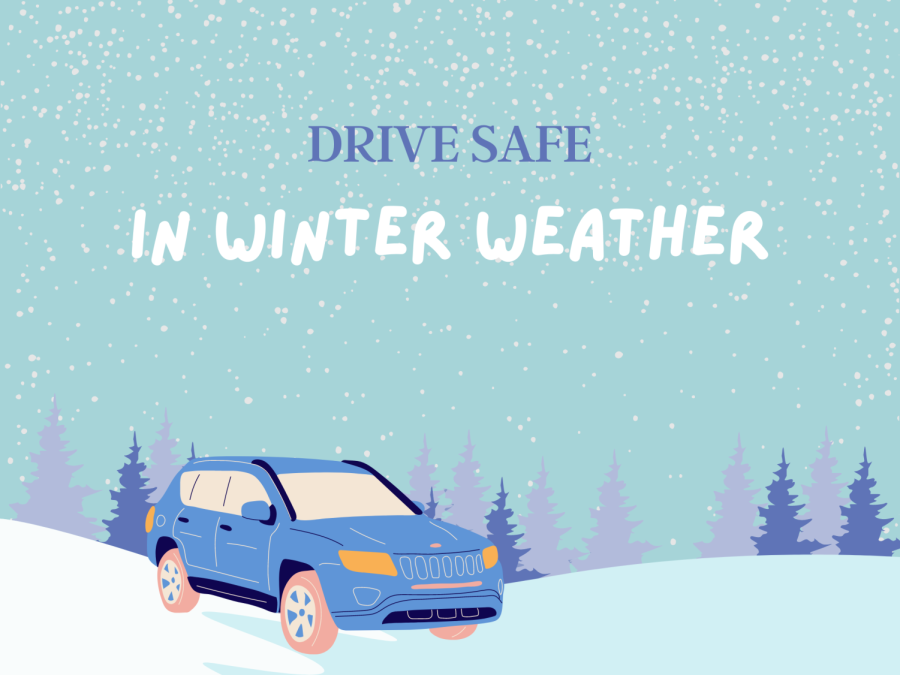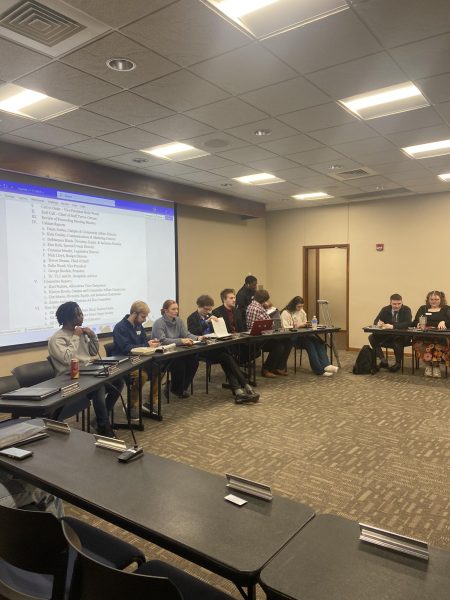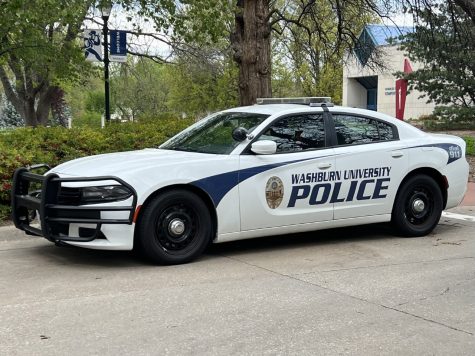Tips about safe driving in the dangerous winter weather
Stay Safe: The winter season can be a dangerous time for drivers, but with the right knowledge you might be able to avoid trouble. Chief Enos gave very helpful advice regarding safe driving and suggested resources for drivers to take a look at.
As we are in the thick of the winter season, it is more important than ever to understand how to drive safely in the conditions that this season brings. Even experienced drivers who are confident driving in snow and ice might benefit from a quick refresh on how to drive safely.
Chris Enos, chief of police at Washburn University, shared that the most dangerous results of winter driving are loss of traction and car breakdown. Loss of traction is a risk that can occur when there is a combination of low temperatures and precipitation resulting in the formation of ice on roads, which can become dangerous during abrupt changes of speed or motion, such as braking, accelerating, and turning. And even without precipitation, low temperatures alone can increase the chance of something going wrong under the hood.
So, how are these avoidable? The most foolproof plan is to stay home when it’s unsafe to be driving. Enos advised that after 6-inches of snow are forecasted, it is in everyone’s best interest to stay home, barring an emergency, then after 12-inches of snow, he said that critical travel might not even be possible.
And, though 6-inches of snow is a very extreme situation, Enos also shared that a forecast of 1-3 inches of snow may send a city into what is called “Phase 3” meaning the police will not be responding to car accident calls that are not dealing with an injury, a hit and run, or influenced by alcohol.
If you are going out, a great preparation to make is to check the conditions of the destination and route there, as weather conditions can abruptly change depending on location. Maintenance of vehicles should also be considered.
To avoid and manage breakdowns, it is advisable for both the driver and car to be prepared. The driver can prepare by dressing appropriately for the weather, such as taking a hat and gloves even if they won’t be used most of the time. A good rule of thumb would be to imagine being stuck in the worst-case scenario; stranded in a vehicle overnight in temperatures below freezing.
The blog post on fixautousa.com “Winter Driving Hazards and How to Avoid Them” has a few suggestions for safe winter driving. These include: keeping the vehicle fueled at least halfway, checking tires for good tread conditions and the right air pressure, check the age and connections of the battery, or for travel in certain locations, consider using snow tires or tire chains.
Enos also shared some preventative tips, such as, restricting the use of cruise control, because it limits the amount of direct control the driver has over the vehicle. He also recommended reviewing which kind of brakes your vehicle has and what you should do in different situations in accordance with that style of brake system, and increasing following distance to account for any potential problems and lack of control from others or your vehicle.
In the case of an accident, the driver must make their own judgment calls on what is the safest action to take, but Enos gave several pointers. Firstly, Enos stressed that drivers should not get out of their car if at all possible, because that then puts the driver in danger of other cars which also have reduced control. Next, the driver should find a way to get off the road, or if that is not possible, do their best to maneuver their vehicle so that it is somewhat out of the way, by doing this, drivers can help additional people avoid getting caught up in the accident.
Lastly, call 911 and exchange insurance and contact information with any others involved, though in certain cases 911 may not answer, it is incredibly important to call if there is an injury caused or if it is a hit and run case.
For more information, Enos recommended checking the AAA website for safe driving tips, which also has a handy checklist about steps to take when stranded.
Edited by: Alyssa Storm, Kyle Manthe
Your donation will support the student journalists of Washburn University. Your contribution will allow us to purchase equipment and cover our annual website hosting costs.














